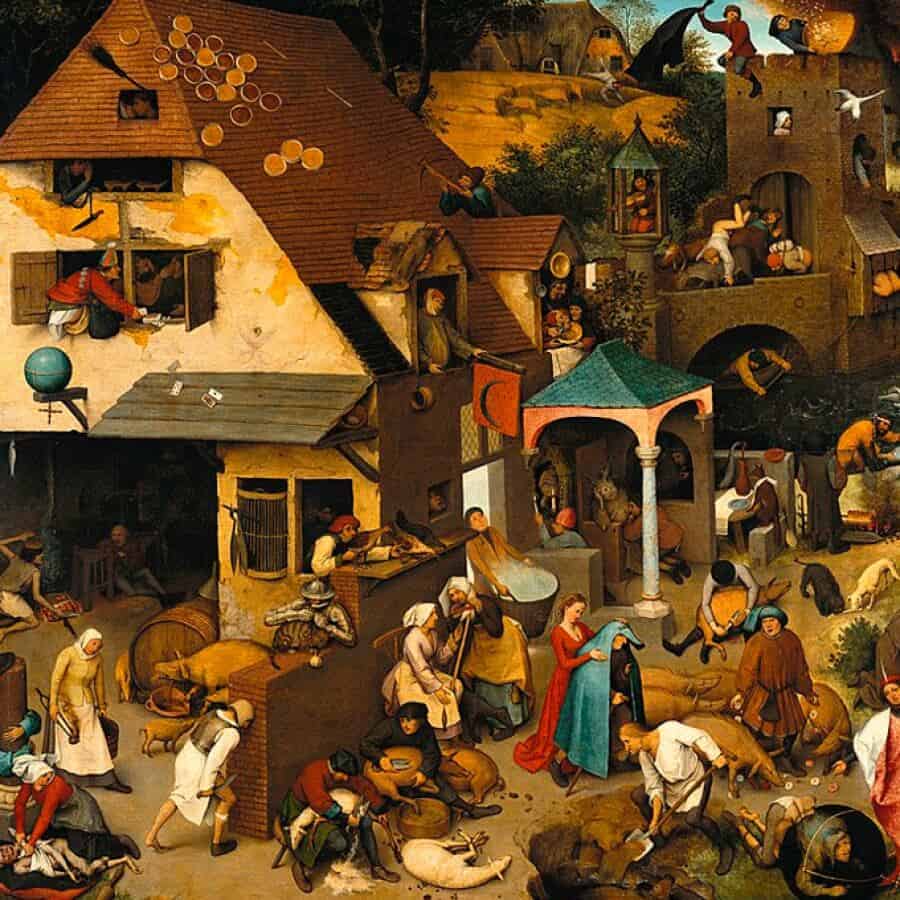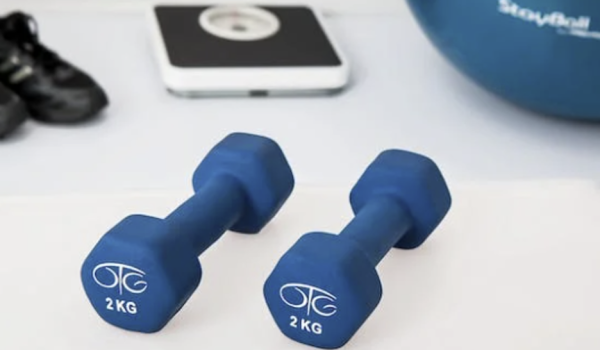It would be hard to find busier paintings than the works of Pieter Bruegel the Elder. His oil painting Netherlandish Proverbs, painted in 1559, can fill a lazy afternoon with a challenge to to identify 112 known – and who knows how many still undiscovered – proverbs that the master blended into a busy but well conceived composition.
Pieter Bruegel was a Flemish painter who was active in the 16th century and who is best known for his genre paintings. Within his relative short life (his exact date of birth is unknown and is estimated somewhere between 1525 – 1530 and his death is documented as occurring in 1569) he painted a large number of works, and in his footsteps followed not one, but both of his sons, Pieter Bruegel the Younger and Jan Brueghel the Elder. The last of his children was a daughter, about whom nothing is known.
Apart from his work as an oil painter, Bruegel also cooperated with the engraver and publisher Hieronymus Cock, and designed the originals for Cock‘s engravings. Important copperplates include his satirical series of Seven Deadly Sins and Seven Virtues.
By Philip Galle After Pieter Bruegel the Elder – http://www.metmuseum.org/art/collection/search/410929, Public Domain, Link
By Philip Galle After Pieter Bruegel the Elder – http://www.metmuseum.org/art/collection/search/410929, Public Domain, Link
In 1553, Bruegel left for Rome, where he lived and worked until 1554. After coming back to Antwerp in 1555, he stayed until his marriage in 1563 and then relocated to Brussels, where he died just a few years later.
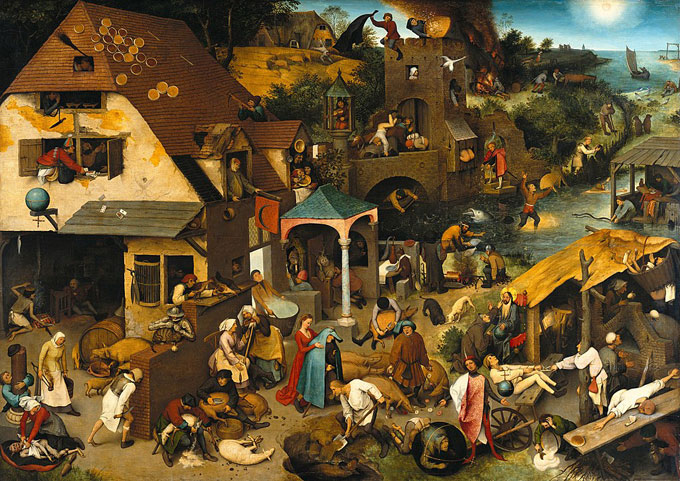
Pieter Bruegel the Elder – Netherlandish Proverbs / Photo: Wikimedia
Proverbs were popular features in Flemish books of hours (e.g. Christian devotional books). Bruegel intended to portray the variability of the world and therefore sought to produce visual representations of certain wisdom, moral lessons, warnings, vices, and even the foolishness of humankind. His paintings were frequently copied by his son Pieter Brueghel the Younger, none of which showed exactly the same proverbs.
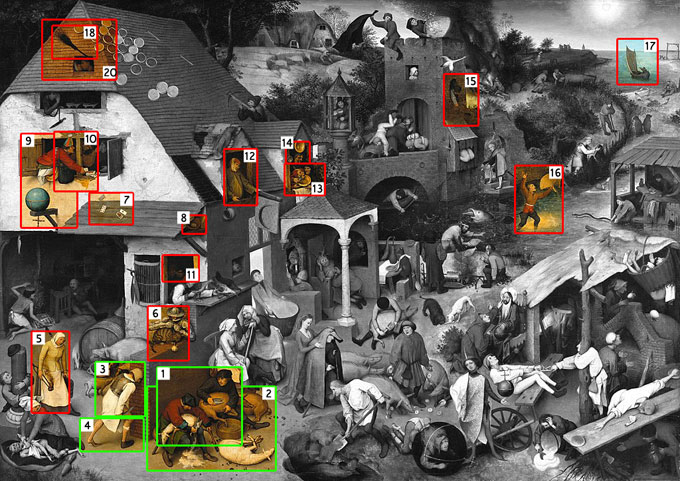
Pieter Bruegel the Elder – Netherlandish Proverbs / Photo: Wikimedia / Graphic Design for the purpose of the article: Martina Advaney
To make the matter even more interesting, some of the depicted scenes can express more than one figure of speech, one example of which is the following scene which pictorially depicts “One shears sheep and one shears pigs“[1] while also “Shear them but don’t skin them“[2] or “To bang one’s head against a brick wall“[3] while simultaneously depicting “One foot shod, the other bare“[4].
To cite a few of the proverbs:
Never believe someone who carries fire in one hand and water in the other (or, be cautious of people who have two faces) [5]
To bell the cat (to take on a risky or dangerous business) [6]
It depends on the fall of the cards (It’s up to chance) [7]
Leave at least one egg in the nest (Always keep something in reserve) [8]
Crap on the world (Despise everything) [9]
Fools get the best cards (Luck overcomes intelligence) [10]
Always gnawing on a single bone (Constantly talking about the same topic) [11]
Having a toothache behind the ears (simulating) [12]
Shaving a fool without lather (tricking somebody) [13]
Two fools under one hood (Stupidity loves company) [14]
Kill two flies with one stroke (Be efficient) [15]
Being unable to see the sun shine on the water (Being jealous of someone’s success) [16]
It is easy to sail before the wind (With favourable conditions, achieving a goal is not difficult) [17]
To stick out the broom (To have fun while the master is away) [18]
To marry under the broomstick (To live together without marrying) [19]

While some of them are very expressive (here a proverb: Crap on the world [9]
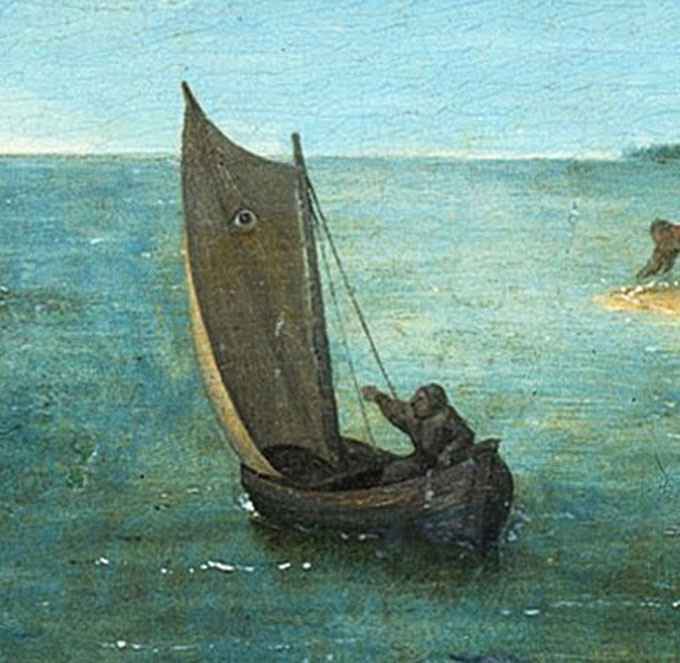
Others are also easily recognizable (here a proverb: It is easy to sail before the wind [17]
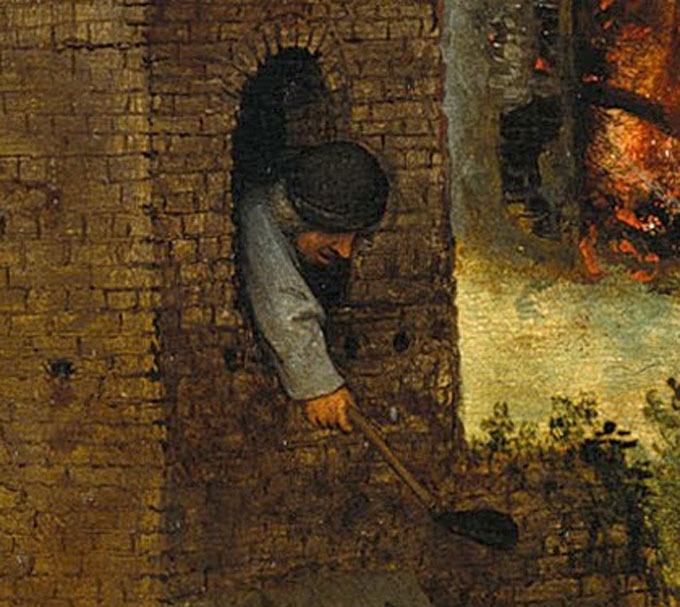
and many are used till date in variations (here a proverb: Kill two flies with one stroke [15]
For more proverbs, visit
Photo: Wikimedia / Graphic Design for the purpose of the article: Martina Advaney
Support us!
All your donations will be used to pay the magazine’s journalists and to support the ongoing costs of maintaining the site.
Share this post
Interested in co-operating with us?
We are open to co-operation from writers and businesses alike. You can reach us on our email at [email protected]/[email protected] and we will get back to you as quick as we can.
